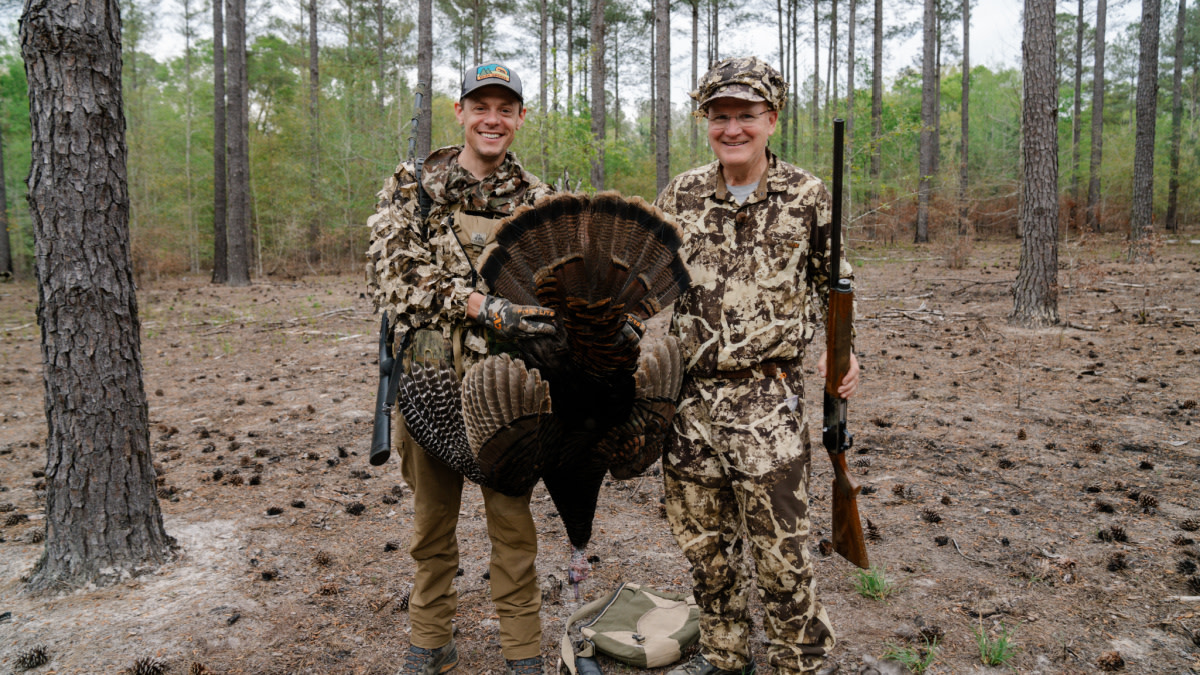
State-employed biologists often suffer insomnia and facial tics caused by cranky hunters who demand more deer and bigger bucks.
But before agency supervisors suggest some R&R or group counseling to prevent employee burnout, they should try this: Appoint the struggling soul as the agency’s “Chief Wild-Turkey Biologist,” and inscribe the title on their breast badge and desk placard. After serving one year as turkey overlord, even the most shattered biologists will emerge perky and self-confident, their spirit and scientific integrity restored.
Why? Because deer make people stupid—turkeys make them happy.
Wild turkeys generate joy, pleasure and general warmth. But don’t take my word for it. Scientific surveys prove it. Each summer the Wisconsin Department of Natural Resources randomly selects thousands of turkey hunters for a postseason survey. And each year those hunters tell the DNR the same thing by responding: “Everything’s good! Don’t ever change!”
After the Spring 2020 season, 42% of Wisconsin’s turkey hunters rated their hunt’s quality “very high” or “fairly high,” and 26% rated it “fairly low” or “very low.” On an overall satisfaction scale of 1 to 10, they judged it a 7.
That’s pretty good for a season in which turkey hunters had a 20% success rate, notching 44,963 of the 224,452 permits issued. That success rate ranked the 2020 season 26th in the state’s 38 spring hunts. It was also the ninth highest kill since turkey hunting resumed in 1983.
For perspective, consider the “Happy Index” 20 years ago after Wisconsin’s November 2000 deer season. That season’s post-hunt survey documented systemic hostility and grumpiness. Despite shooting a record 528,494 deer and a second-best 171,753 antlered bucks (138 fewer than the 1995 record), only 28% of the hunters rated the gun-deer season’s quality as “high” while 31% rated it “low.”
Tough crowd, eh?
Turkey hunters, however, are chronically grateful for every opportunity. In contrast to deer hunting’s perennial complainers, turkey hunters seldom claim the DNR overshot the flock 15 years ago when success rates averaged 25% for a decade. In fact, hunters bagged over 52,400 jakes and gobblers each spring from 2007 to 2009, including a record 52,880 in 2008. Wisconsin’s hunters haven’t killed 50,000 turkeys since. The spring harvest fell below 48,000 in 2010, and its high the past decade was 45,501 in 2016. In fact, the turkey tally fell short of 40,000 in 2013, 2018 and 2019.
Deer hunters would consider those drop-offs damning evidence. But no one ridiculed or questioned the DNR’s numbers when its former chief turkey biologist, Mark Witecha, issued a press release in June 2020 announcing the season’s nearly 45,000-turkey harvest. That was Wisconsin’s highest kill in four years and second highest since 2010, evidence of “a healthy and robust turkey population entering the spring season.”
Witecha also said: “Good weather and enhanced opportunity for hunters likely contributed to the increased harvest, but ultimately Wisconsin continues to have one of the healthiest turkey flocks in the nation."
Meanwhile, no governor-appointed suits on the state’s Natural Resources Board are dictating 5-year studies to assess the nest-raiding impacts of opossums, skunks, and raccoons on turkeys. Nor are they commissioning an independent turkey czar, and demanding the DNR trap hundreds of owls and hawks, fit them with GPS transmitters and mortality sensors, and log how many poults and roosted turkeys get hammered annually by birds of prey.
The Natural Resources Board ordered such things a decade ago over sagging whitetail numbers, which accomplished little or nothing.
Fortunately, all evidence from the 24-question 2020 turkey-hunting survey suggests Wisconsin hunters are content and flying First Class. No one frets that Wisconsin is spoiling youngsters by granting them an exclusive youth-only weekend hunt before the regular season. Nor is anyone claiming the agency is setting up kids for a lifelong letdown if they shoot a triple-bearded gobbler during their special season. “She’ll never shoot a bigger bird, so it’s all downhill from here!”
Nope. The 2020 survey found only 8% of hunters participated in the youth turkey hunt, and the kids’ success rate was 20%. Lest anyone forgot, that’s the same rate turkey hunters achieved during the regular season.
In general, the survey suggests turkey hunters are go-along, get-along types. When asked if they felt much competition from other hunters, 85% said “no” or “not much.”
When asked if another hunter interfered with their chance to bag a turkey, 88% said “no” or “not much.”
And when asked if the DNR should change the number of turkey permits where they hunt, 90.5% said the allocation should stay the same or increase.
The survey also found most turkey hunters feel welcome across the state. When asked how hard it was to find a place to hunt turkeys, 77% said “very easy” or “somewhat easy,” and only 9.4% said “very” or “somewhat difficult.”
But a mystery remains: Most turkey hunters also hunt deer, so why do the same people who generally count their blessings in spring mostly count their curses in fall?
We might never know that answer, but here’s some advice for parents with kids at home: If a child should ask about studying wildlife management in college, share this secret to long-term job satisfaction: “Follow the science, kid. Study turkeys. They make people happy.”




